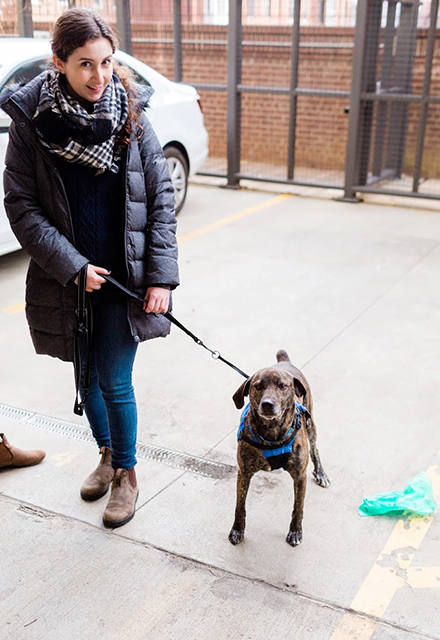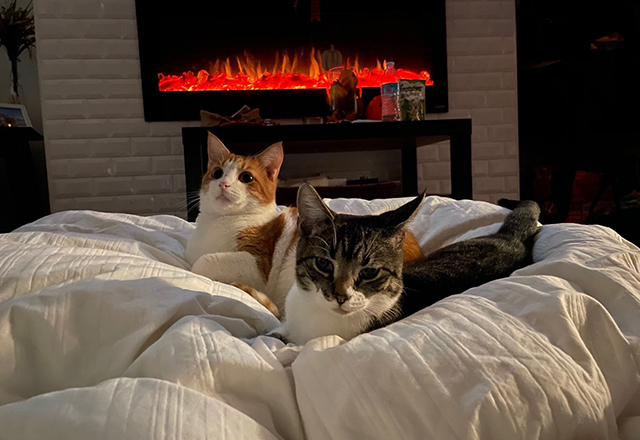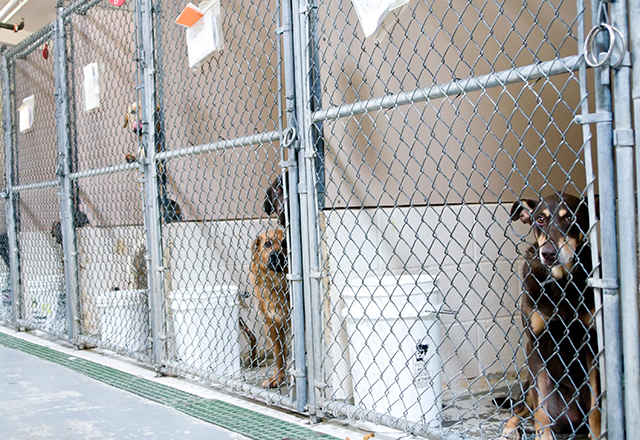After I moved to Baltimore for graduate school in 2017, I was immediately eager to get involved with rescuing animals. That fall, I began fostering animals for City Dogs Rescue & City Kitties (CDR&CK), which is based in Washington, D.C. By the time COVID-19 rolled around, I was on my eighth foster dog! Before COVID-19, there were usually about five to 10 dogs and many cats in need of foster placement each weekend. After the pandemic struck, there were almost none needing foster homes because they were all either claimed for adoption before they even arrived or were immediately set up with foster homes.

With people resigned to stay in their homes, there was an immediate surge in demand for adoption pets. On top of this, there was a definite increase in the number of foster volunteers at CDR&CK as well as at most rescue organizations across the nation. At CDR&CK, any given animal suddenly could have around 20 applications for adoption at one time. There was also such an outpouring of people reaching out to foster animals that at times there weren’t enough animals to go around. “It felt like for many months, we specialized in breaking hearts!” says Amanda, a volunteer for the rescue organization. The American Society for the Prevention of Cruelty to Animals noted a 400% spike in foster volunteer applications, which is absolutely unprecedented. Some organizations that housed most of their rescue animals in shelters are now moving to a more foster-based model. For example, the Humane Rescue Alliance normally housed about 20% of its animals in foster homes, and now it has over 65% in homes. When life returns to normal, the organization aims to retain at least 50% of its animals in foster homes, keeping only those with the greatest medical and behavioral needs in its shelter with expert care. Meanwhile, organizations that already used a foster-based model of rescue have been able to expand even further, with an almost infinite capacity of animals they can house.
Being in foster homes as opposed to shelters can help animals in more ways than one. A study by Gunter et al. at the University of Arizona and Virginia Tech in 2019 showed that even moving an animal into a foster home for just two nights significantly decreased their stress hormones. Additionally, foster volunteers can work on taking photos of their foster animals in a home environment to help advertise them. My roommates and I have an Instagram (@charmcity_pupsnkitties) account that we use for all of our foster animals, with almost daily posts showing them enjoying their new life in a home. Not only do people enjoy seeing cute animal pictures during this stressful time in the world, but several of our animals have been adopted by people who found them through their photos on social media!
In 2020, many aspects of life became virtual — and pet adoption was no exception. So far during the pandemic, my roommates and I have fostered four wonderful cats, and we are currently preparing to welcome two more. In the past, potential adopters came to our home to meet the foster animals. These days, our animals are busy with Zoom meetings just like us humans. Though rescue organizations were concerned that this virtual meeting format would not be conducive for pet adoptions, the system has been working great so far. Usually, we have a video call with the potential adopter, during which we keep the phone focused on the animal as it plays and looks cute for the camera. While enjoying the animal’s adorable antics, we discuss its temperament, eating habits, interactions with other animals and health status with the potential adopter until the person feels comfortable making a decision. We have had a 100% success rate of the potential adopter committing to adopt by the end of the call.

All of these trends have been wonderful for placing pets into homes, and the hope is that after the pandemic subsides, we do not see a large rate of animals being returned. Rescue organizations fear that people may be adopting pets during a time that their lives and schedules look quite different than they used to, and that when they go to work again, they may end up not being able to care for their new pets. Another concern for many is that their new pandemic puppy (or kitty) may not be able to handle being alone, since their humans have been around the house for so long. This is where proper training comes in — new and old pet owners alike need to be proactive about this for when the time comes to go back to work. Despite these concerns, the pandemic’s effects have overall been quite positive for adoptable pets.
Many rescue animals still need places to stay while they await their forever homes. If you feel that fostering could be a good option for you, you can learn more here.

Sources
- 1 Of A Kind Shelter Helps Traumatized Dogs Learn To Trust Humans Again
- So Many Locals Want To Foster Pets That This Animal Rescue Is Rethinking Its Model
- Evaluating the effects of a temporary fostering program on shelter dog welfare
- The Pandemic Pet Adoption Craze Of 2020
- City Dogs Rescue & City Kitties
Related content
- Caring for Your Pet During COVID-19
- Graduate School Is the Cat’s Meow
- Ways in Which We Can Help Throughout the Coronavirus Pandemic
Want to read more from the Johns Hopkins School of Medicine? Subscribe to the Biomedical Odyssey blog and receive new posts directly in your inbox.
